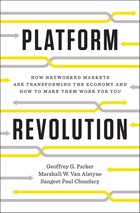
The Technical Arms Race Intensifies
YouTube has escalated its ongoing battle against ad blockers with a sophisticated new approach that goes far beyond simple popup warnings. The platform is now implementing "fake buffering" - a clever technical solution that introduces artificial delays equivalent to 80% of the ad duration that would have been displayed.
This isn't just a simple timeout. YouTube's implementation leverages their SABR (Server Adaptive Bit Rate) protocol, a proprietary system that normally helps optimize video streaming. By instructing the Google Video Services (GVS) to send backoff signals to clients, YouTube creates the appearance of network congestion or server load when it's actually an intentional delay targeting ad-blocked users.
The Economics Behind the Push
The technical sophistication of these measures reflects YouTube's massive operational costs. Streaming billions of hours of content globally requires enormous infrastructure investment, from data centers to content delivery networks. The platform's parent company, Google, faces pressure to monetize this investment while competing with subscription services and maintaining creator payouts.
YouTube Premium, priced at approximately $13 monthly in many markets, represents the company's preferred revenue model. However, adoption rates suggest many users find this price point challenging, especially when compared to other entertainment subscriptions.
User Behavior and Platform Dynamics
The user response to these measures reveals interesting behavioral patterns. Some users report that artificial buffering is actually less disruptive than traditional ads because it doesn't involve audio interruption or visual distraction. This creates a paradox where YouTube's countermeasure might be more tolerable than the original advertising experience.
The Quality Problem in Digital Advertising
A significant factor driving ad-blocking adoption is the quality and relevance of advertisements served. Users frequently encounter:
- Scam advertisements that slip through content filters
- Inappropriate content that doesn't match viewer preferences
- Excessive volume levels and intrusive formats
- Repetitive ads that create negative brand associations
These issues suggest that the ad-blocking phenomenon isn't solely about avoiding commercials, but about avoiding poor advertising experiences that traditional broadcast media largely avoided through stricter content standards.
Technical Innovation and Future Implications
YouTube's current approach represents just one phase in an evolving technical battle. Future developments might include:
Server-Side Ad Insertion: Embedding advertisements directly into video streams at the server level, making them indistinguishable from content
Real-Time Content Modification: Dynamically altering video streams based on user behavior and subscription status
Advanced User Fingerprinting: More sophisticated methods to identify and track ad-blocking behavior across sessions
These technologies raise important questions about user agency and the future of web browsing. As platforms develop more invasive countermeasures, they risk creating an adversarial relationship with their user base.
Alternative Models and Market Evolution
The current standoff highlights the need for innovative monetization approaches. Some creators are already experimenting with:
- Direct fan funding through platforms like Patreon
- Merchandise and product sales
- Educational courses and premium content tiers
- Sponsored content that provides genuine value
These models suggest a potential future where content creators become less dependent on platform-mediated advertising, potentially reducing the intensity of anti-ad-blocking measures.
The Broader Digital Economy Impact
YouTube's anti-ad-blocking efforts reflect broader tensions in the digital economy. As users become more sophisticated about privacy and content consumption, platforms must balance:
- Revenue generation against user experience
- Technical capabilities against user autonomy
- Content creator compensation against platform sustainability
- Innovation against accessibility
Rethinking the Value Exchange
The fundamental question underlying this technical arms race is whether the current advertising model serves anyone well. Users feel overwhelmed by poor-quality ads, creators struggle with unpredictable revenue, and platforms face constant technical challenges.
A more sustainable approach might involve: - Higher-quality, better-targeted advertising that users actually value - More transparent and affordable subscription options - Creator-controlled monetization tools - User choice in advertising preferences and frequency
The Path Forward: Beyond the Arms Race
The current trajectory of escalating technical countermeasures benefits no one in the long term. Users invest time in circumventing restrictions, platforms spend resources on enforcement, and creators remain caught in the middle.
The most successful resolution will likely come from platforms that prioritize user experience while developing sustainable business models. This might mean accepting that some users will never watch ads, while focusing on creating value for those willing to engage with advertising or pay for premium experiences.
Ultimately, the YouTube ad-blocking battle represents a larger conversation about digital rights, platform economics, and the future of content consumption. The companies that solve these challenges thoughtfully, rather than through pure technical force, will likely emerge as the winners in the evolving digital landscape.













